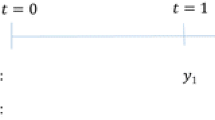Synopsis
This paper considers the well-known Levhari-Mirman discrete-time model of resource extraction, and investigates the effects of the information structure of the dynamic game – open-loop, Markovian or history-dependent – on the equilibrium consumption path and the overall utility of the agents. Due to the special structure of the model, the open-loop regime yields a Pareto-optimal outcome. The Markovian regime leads to the most pronounced version of the tragedy of the commons. History-dependent behavior yields an outcome set that is intermediate between the other two cases, and that may include the Pareto-optimal outcome in some cases. The level of efficiency of equilibrium behaviour is thus U-shaped as a function of the level of information the agents’ extraction strategies are based on. The analysis suggests that in environments characterized by a dynamic (and no market) externality, forcing agents to commit to open-loop behavior would constitute welfare-improving regulation.
Similar content being viewed by others
References Cited
Amir Rabah (1996). Continuous stochastic games of capital accumulation with convex transitions. Games and Economic Behavior 16: 111–131
Amir, Rabah. 2003. Stochastic games in economics II: an overview. Pp. 455–470 in Abraham
Neyman Sylvain & Sorin (eds) Stochastic games and applications. Dordrecht: Kluwer.
Basar, Tamer & Geert Olsder. 1999. Dynamic noncooperative game theory. SIAM Classics (revised edition).
Bergstrom Theodore C. (1982). On capturing oil rents with a national excise tax. American Economic Review 72: 194–201
Cave Jonathan (1987). Long-term competition in a dynamic game: The cold fish war. Rand Journal of Economics 18: 596–610
Chiarrella Carl, Murray Kemp, NgoVan Long, Koji Okuguchi (1984). On the economics of international fisheries. International Economic Review 25: 85–92
Clark, Colin. 1999. Renewable resources: fisheries. Pp. 109–121 in den Bergh, J.C.J.M. (ed.) Handbook of Environmental and Resource Economics. Edward Elgar Publishing Limited, Cheltenham.
Datta Manjira, Leonard Mirman (1999). Externalities, market power, and resource extraction. Journal of Environmental Economics and Management 37: 233–55
Dasgupta Partha, Geoffrey Heal (1979). Economic theory and exhaustible resources. Cambridge University Press, Cambridge
Debreu, Gerard. 1952. A social equilibrium existence result. Proceedings of the National Academy of Sciences of the USA.
Dockner Engelbert, Vaijo Kaitala (1989). On efficient equilibrium solutions in dynamic games of resource management. Resources and Energy 11: 23–34
Easley David, Daniel Spulber (1981). Stochastic equilibrium and optimality with rolling plans. International Economic Review 22: 79–103
Fisher Ronald, Leonard Mirman (1996). The complete fish wars: biological and dynamic interactions. Journal of Environmental Economics and Management 30: 34–42
Fudenberg Drew, Jean Tirole (1986). Dynamic models of oligopoly. Harwood Academic Publishers, Chur, Switzerland
Gordon H. Scott (1954). The economic theory of a common-property resource: the fishery. Journal of Political Economy 62: 124–42
Laffont Jean-Jacques, Jean Tirole (1993). A theory of incentives in procurement and regulation. MIT Press, Cambridge MA
Levhari David, Leonard Mirman (1980). The great fish war: an example using a dynamic Cournot-Nash solution. Bell Journal of Economics 11: 322–344
Lewis Tracy, Richard Schmalensee (1980). On oligopolistic markets for nonrenewable natural resources. Quarterly Journal of Economics 95: 475–491
Perry Martin (1984). Scale economies, imperfect competition and public policy. Journal of Industrial Economics 32: 313–333
Reinganum Jennifer, Nancy Stokey (1985). Oligopolistic extraction of a non-renewable common- property resource: the importance of commitment in dynamic games. International Economic Review 26: 161–173
Salant Steven (1976). Exhaustible resources and industrial structure: a Cournot-Nash approach to the world oil market. Journal of Political Economy 84: 1079–93
Author information
Authors and Affiliations
Corresponding author
Rights and permissions
About this article
Cite this article
Amir, R., Nannerup, N. Information Structure and the Tragedy of the Commons in Resource Extraction. J Bioecon 8, 147–165 (2006). https://doi.org/10.1007/s10818-006-9001-2
Published:
Issue Date:
DOI: https://doi.org/10.1007/s10818-006-9001-2




